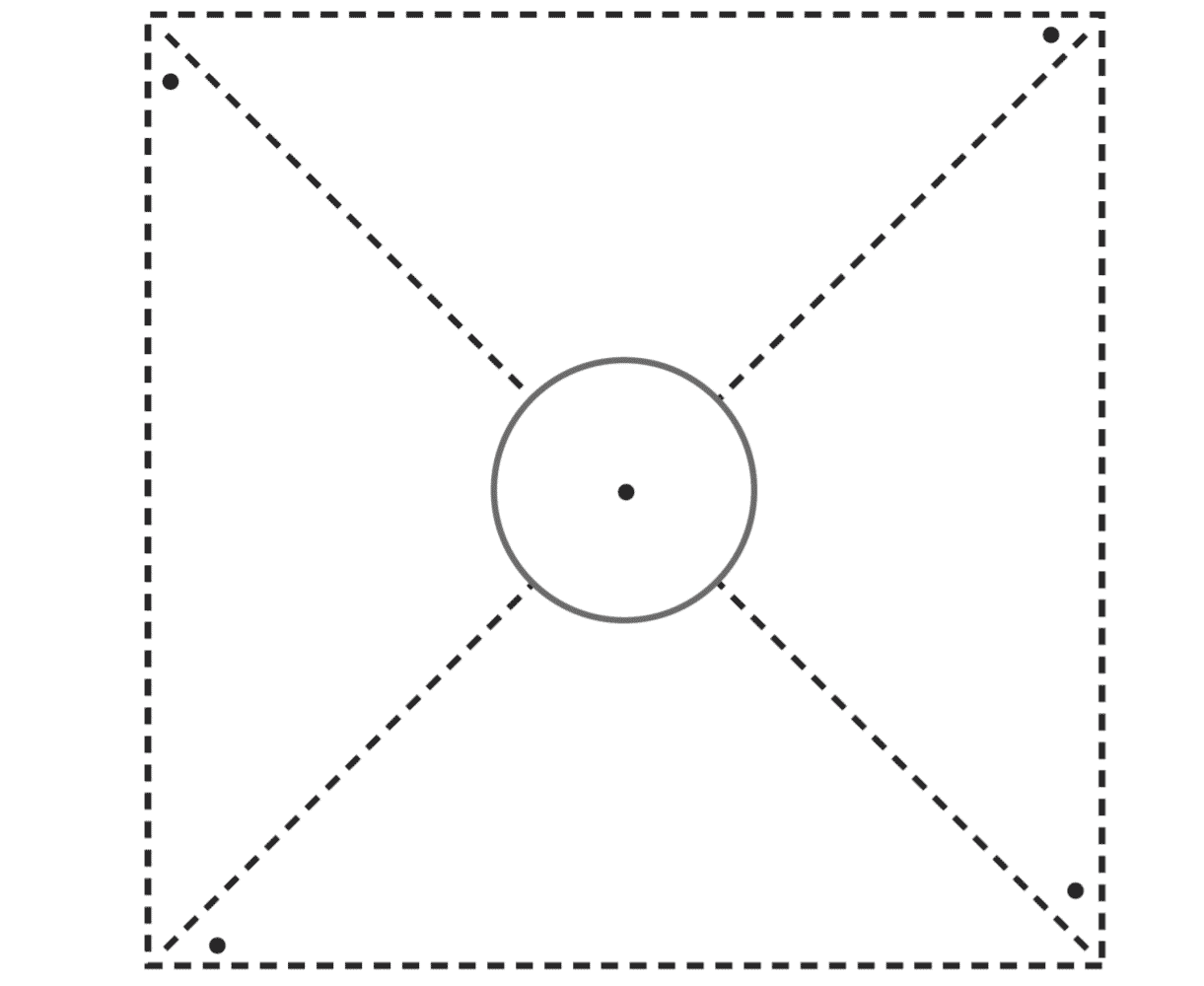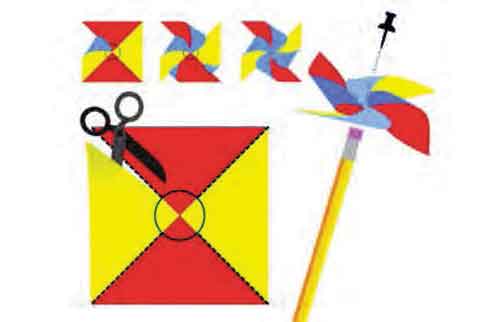Overview
STEM careers
Grade level
Time
Materials
Per Class:
|
Per Student:
|
Instructions
Students experiment with direction and force as they try to see how fast they can make their pinwheel spin.
- Show students the windy day photos, and ask questions such as: Can you see the wind? How do you know it’s there? When you’re outside on a windy day, what does it sound like? What does it feel like? What do you notice blowing on a windy day?
- Hand out pinwheel templates. Tell students to color both sides.
- Cut out the pinwheel, and then cut along the diagonal, dashed lines.
- Use the pushpin to poke holes at the 5 dots. Twist the pin to make the holes smooth, which will help the pinwheel spin.
- Stick the pushpin through each of the corner holes, through the center hole, and then into the top of the pencil eraser.
- Experiment with blowing on the pinwheel from different directions and with different levels of force.
Printables

Guiding questions
-
Can you make your pinwheel spin faster? Slower?
-
Can you make it spin in the opposite direction? How?
-
Can you think of anything else in nature that could be used to create electricity?
Engineering & science connections
- Engineers design wind turbines, which work much the same way as pinwheels. Wind turbines range in size, but the average height of a typical electricity-generating wind turbine is about 325 feet, which is the same as a 30-story skyscraper!
- Wind turbines convert the kinetic energy of wind to mechanical energy in rotors. Then the rotors convert mechanical energy to electrical energy in a generator, which spins special magnets around a wire to induce an electrical charge.
- Both pinwheels and wind turbines have to be designed to catch as much wind as possible without breaking under stress. This means figuring out the best curves for the blades and how to best angle them toward the wind. And also figuring out which materials are light enough to spin, but strong enough to resist tearing.
Curious George is a production of Imagine, WGBH and Universal. Curious George and related characters, created by Margret and H.A. Rey, are copyrighted and trademarked by Houghton Mifflin Harcourt and used under license. Licensed by Universal Studios Licensing LLC. Television Series: © 2013. Universal Studios. All Rights Reserved. The PBS KIDS logo is a registered mark of PBS and is used with permission. Proud Sponsors of Curious George® on PBS KIDS® are Stride Rite Children’s Group, LLC., and ABCmouse.com.


0 Comments